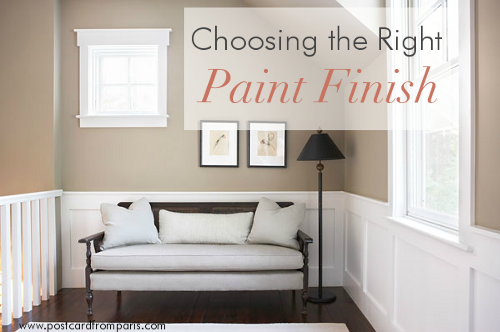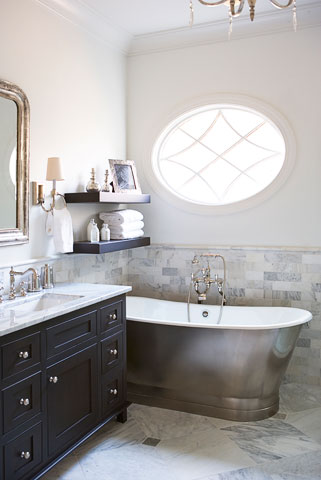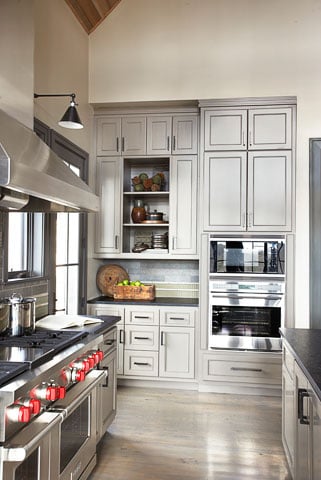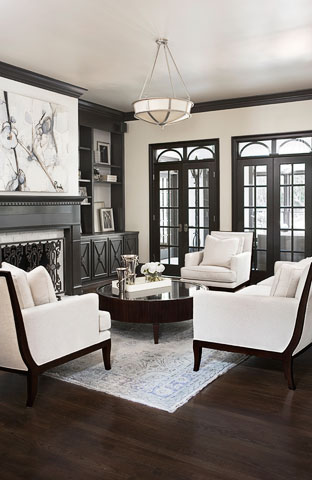One of the most frequently asked questions we get is about paint finishes. What paint finish was used in certain rooms of past projects and what paint finish is best? While the choice is largely a personal preference, there are some benefits to using certain finishes in certain spaces.

We're breaking down the differences among all the various paint finishes to hopefully help you choose the right finish for your home or a particular space.
Flat/Matte
Flat and matte finishes are typically used interchangeably.This finish has the least amount of shine to it, which results in no light reflection.
Pros: Hides wall imperfections, like bumps, very well, making it a good choice for walls with texture {will make the wall appear smoother} or ceilings. This finish will also hide the occasional nick and scratch and is the easiest to touch up.
Cons: Can be hard to keep clean due to its porous nature. This finish will hold dirt and stains so its best to address and clean right away. It's best to avoid using this finish in areas that get the most use and are susceptible to staining like kitchens and powder rooms.

Eggshell
An eggshell paint finish has a slight hint of gloss, like the very low sheen of an eggshell where its name is derived.
Pros: Due to the low sheen, walls don't appear shiny or glossy. This finish also holds up better over time because it's easier to clean and resists staining better than a flat finish. Great to use in those higher traffic areas like kitchens, living rooms, and bathrooms.
Cons: This finish will show imperfections so it's important to apply a good primer first. Will also show marks when trying to touch-up.

Satin
A satin finish has a more smooth and velvety appearance and has slightly more gloss than an eggshell finish.
Pros: Also very resistant to stains and easy to clean and scrub. Works well for high-traffic areas like kitchens, living rooms, and bathrooms as well as trim and doors. A satin finish or low-luster finish also provides the appearance of more depth than flat paints.
Cons: Since it has slightly more sheen, it can be a little harder to touch up. Also has a tendency to highlight wall imperfections.

Semi-Gloss
As its name alludes, semi-gloss is part glossy paint and has even more shine than a satin finish.
Pros: It's more durable and easier to wipe clean than the lower gloss finishes, which makes it a good choice for kids' areas, cabinetry, doors, and trim. A semi-gloss finish can also help brighten a dark space since it reflects more light.
Cons: Due to it having more shine, it is tougher to touch up walls {although still fairly easy to touch up trim}. Because it does reflect more light, it can accent and highlight any imperfections or minor flaws.

Gloss
High gloss paints have the shiniest finish and are highly reflective.
Pros: It is the most durable when it comes to staining and is very easy to clean.
Cons: It highlights imperfections the most and is typically reserved for furniture and sometimes window and door trim due to its shiny finish. The hardest to touch up and usually requires re-painting the entire wall instead of re-touching certain spots as it will leave a noticeable ring.
Now that you've learned about the various paint finishes, it's time to make your selections. For more specific tips on paint application and how to pair and where to use different finishes, download this tip sheet from our design team.
Photos by: Rachael Boling

